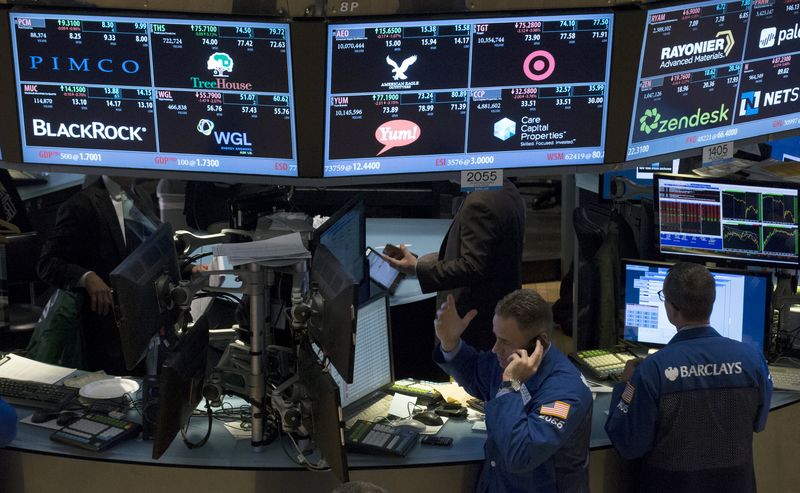By Geoffrey Smith
Investing.com -- Joe Biden admits that his economic reform agenda is stalled, but said he supports the Federal Reserve's intentions to get inflation down. He was less clear about what he intends to do if Russia invades Ukraine for the second time in eight years, a scenario that he admitted is likely. German producer prices rose by 5% in December and 24% on the year, but ECB President Christine Lagarde still believes that the inflation dynamic in the Eurozone isn't as threatening as in the U.S. China cut its one-year prime lending rate, and the U.S. government releases jobless claims and oil inventories data. Netflix (NASDAQ:NFLX) heads the roster of companies reporting earnings. Here's what you need to know in financial markets on Thursday, 20th January.
1. Biden acknowledges policy stalemate
President Joe Biden admitted that his attempts to pass the ‘Build Back Better’ bill, the heart of his economic agenda, have effectively stalled.
In his first major news conference of the year, Biden also acknowledged that his plans to resist Republican-driven changes to state voting laws were unlikely to succeed, after two Democratic Senators refused plans to weaken the Senate’s filibuster powers. That reduces the chances of trumping new restrictions at state level with federal legislation.
Biden also indicated support for the Federal Reserve’s broadly-signalled intentions to raise interest rates sharply this year in order to bring down inflation. A green flag to monetary tightening and the absence of fiscal stimulus point to a risk of policy drag on the U.S. economy this year.
2. Russia seen likely to invade Ukraine; no clarity on West's response
Adding to the sense of drift emanating from the White House, Biden also gave an unclear answer when asked about possible responses to a Russian invasion of Ukraine.
Biden said he expects Russia to “move in” on Ukraine but gave no clear answers as to what the U.S.’s response would be. He hinted at restricting the ability of Russian banks to process dollars, a step that has previously been considered as too much of a shock to the dollar-led global financial system.
Biden repeated threats that Russia would face serious consequences, but he remained unable to say whether these would include stopping the new Russian gas pipeline to Germany from beginning operations. European leaders have also been unable to renounce the Nord Stream 2 link due to concerns about energy security.
3. Stocks set to open higher; Netflix, railroad earnings eyed
U.S. stock markets are set to open with a modest bounce – as they had done before the open on Wednesday too, before being overtaken by fears of inflation and higher interest rates.
By 6:20 AM ET, Dow Jones futures were up 151 points, or. 0.4%, while S&P 500 futures were up 0.6% and Nasdaq 100 futures were up 0.9%.
Stocks likely to be in focus later include Amazon (NASDAQ:AMZN), which announced it will open its first brick-and-mortar fashion store in California, and United Airlines, which admitted late Wednesday that it will take another year to get back to 2019 capacity levels.
Netflix earnings are the highlight of the late session, while railroad operators Union Pacific (NYSE:UNP) and CSX (NASDAQ:CSX) report earlier, as do Travelers (NYSE:TRV), Baker Hughes and American Airlines (NASDAQ:AAL).
4. Jobless claims to show Omicron impact. Lagarde glosses over German price surge
The U.S. will release initial jobless claims data for last week at 8:30 AM ET, which will be of more interest than usual after last week’s report showed signs of the latest wave of Covid-19 finally hitting employers.
The data calendar has already generated some shocks overseas, with German producer prices rising 5% on the month and a whopping 24.2% on the year in December thanks to surging energy prices and other supply chain disruptions. ECB President Christine Lagarde reiterated that the inflation dynamics in the Eurozone are different from those in the U.S.
In China meanwhile, the central bank cut its one-year Prime Loan rate to 3.7%, as expected and promised further support in the coming months.
5. Oil stalls after U.S. inventory build
Crude oil prices were little changed as the latest inventory report from the U.S. took the steam out of this week’s rally.
The American Petroleum Institute reported on Wednesday that crude inventories had risen by 1.40 million barrels last week, rather than falling by 1.4 million barrels as expected. That follows two weeks of surprisingly strong builds in gasoline inventories that suggested a weakening in final demand. The government’s data are due at 10:30 AM ET.
By 6:30 AM ET, U.S. crude futures were up 0.15 at $85.87 a barrel, while Brent futures were down 0.2% at $88.28 a barrel.
